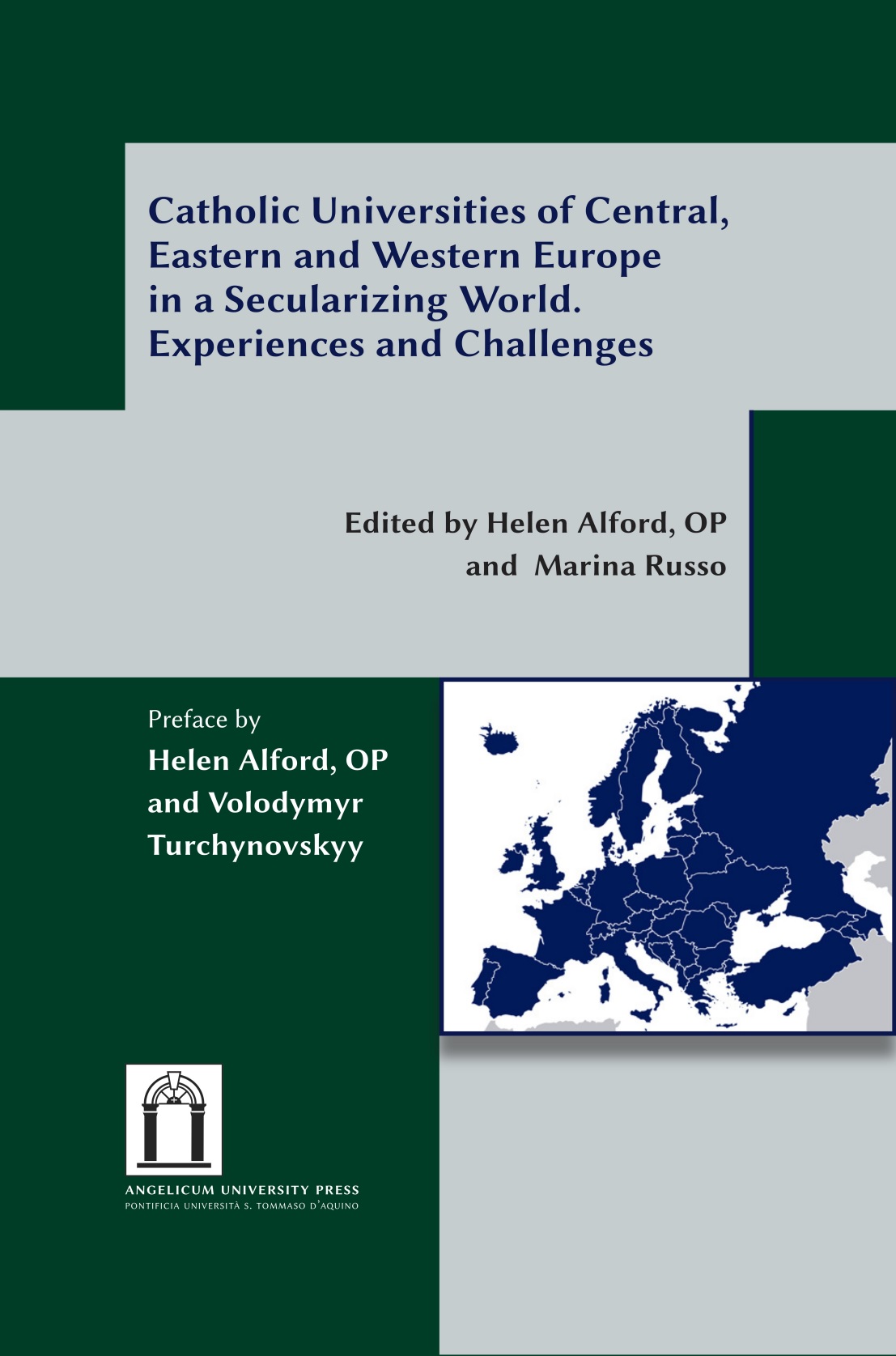Introduction
The 2010 U.S. Census indicates that Hispanics have become the largest minority in the United States of America (U.S. Census Bureau 2010)1. The 2000 census already indicated that Hispanics were the fastest growing ethnic group in the U.S. Now they constitute over sixteen percent of the total population, a total of fifty million people, or one in every six Americans (ibid.). In contrast, “Blacks” or “African Americans” –until now the largest minority in the US– constitute twelve percent of the American population, a total of thirty-nine million (ibid.). Those identifying themselves as only "White" represent sixty-four percent of the entire population, that is, one hundred and ninety-six million of the total U.S. population of three hundred and eight million (ibid.).
All together, Hispanics are far from uniform. They vary in economic, religious, educational and social background, skin color, national origin, use of language, political views and immigrant and legal status. Hispanics face many opportunities and challenges frequently confronted by immigrants in a new country. However, they also confront some new circumstances that other immigrants did not, above all, a global market that is progressively reliant on well-educated English-speaking workers. In addition, Hispanics as a group are youthful. While the median age for non-Hispanic Whites in 2000 was thirty-nine, it was twenty-seven for Hispanics (U.S. Census
Bureau 2000). The children of today's Spanish-speaking immigrants will number about twenty-
six million by 2030 and a large number of them will be part of the American workforce.
This short article focuses on some of the key opportunities and challenges that Hispanics in America face in the fields of education, politics, health and integration.
Education
Hispanics continue to have low levels of completed schooling although the majority of demographic groups in America have significantly increased their enrollment since the mid-1960s (Mare 1995)2. Moreover, even if America is host to some of the most renowned universities in the world, this is not the case at the primary and secondary levels: "Thousands of young Hispanics must pursue inter- and intra-generational social mobility predominantly via segregated inner-city schools that feature dropout rates well above the national average" (Tienda 2006). Considerable lack of prospects for academic attainment in primary and secondary schools contribute to inequality at the college and university levels. As the economy progressively demands more highly skilled workers, this educational inequality is a severe obstacle for Hispanics in America pursuing the "American dream."
Despite these obstacles, Hispanic college enrollment has been increasing in recent years. Hispanic secondary school alumni tend to go to college more than any other demographic group. Nevertheless, Hispanics frequently do not obtain a four-year degree because they generally enroll in a two-year college, frequent only part-time, or work full-time while enrolled (Fry 2002, 2003)3.
General schooling and technical formation are the cornerstones that will provide U.S. Hispanic workers and their descendants with the vital instruments to contribute to and share in the prosperity of America. Knowledge of English is key to success in higher education, in the labor market, and in daily activities such as navigating the ever-complex healthcare system as well as participating in civic life. Advancing Hispanics' scholastic level would better their quality of life. Thinking only economically, if tomorrow's Hispanic workers do not have the work skills of tomorrow’s pensioners, their wages will be insufficient to replenish a Social Security system that is already in decline. Investing in the area of education would not only help Hispanics but the whole country by improving skill levels in the United States as baby boomers shift to retirement.
Politics
Hispanics have strong opinions on many social issues –education is considered by most Hispanics as the main issue facing the nation4. Yet, compared to Whites and Blacks, Hispanics participate only minimally in local and national elections or civic and organizational activities. They are also less likely to be members of social or civic associations and organizations or to contribute money or time to public activities. Rarely do they assume leadership roles in such organizations or activities, even though they self-report high involvement in school-based activities (Verba et al. 1995).
Initial evidence suggests that if a Hispanic individual was involved in the political life of his or her home country or community of origin, he or she will more probably participate in public activities in America (Tienda 2006:70). Twenty percent of Hispanic immigrants are active in international political movements. However, the longer they stay in the country, especially once the immediate family has fully migrated to the U.S., the less they keep up these kinds of activities, if they do not cease doing them completely (ibid.).
There is also a widening gap, which has been increasingly more quickly in recent years, between the number of Hispanics in America and the number of Hispanic registered voters. Hispanics are about fifteen points below Whites and ten points below Blacks when it comes to voter registration and turnout at the polls in the last twenty-five years (Suro et alt. 2005). For the 2004 presidential election, almost fifty-eight percent of Hispanics registered to vote, while only forty-seven percent actually voted, whereas seventy-five percent of Whites registered to vote and sixty-seven per cent actually voted (Tienda 2006:70-71). Although in the past twenty years there has been an ongoing campaign to reach out to Hispanic voters, very few Hispanics actually show up at the voting polls. This great disparity between registered Hispanics and registered non-Hispanic citizens is mostly due to economic, age, and academic differences. In other words, poor, inadequately educated young people, although registered to vote, are less likely to vote than older, wealthier and more educated voters.
In contrast with U.S.-born Hispanics, foreign-born naturalized Hispanics are also less likely to participate in public and non-electoral political engagements. Moreover, integration seems to favor political engagement: "Civic involvement increases with longer periods of residence in the United States, with third-generation Hispanics voting at a percentage higher than their second generation counterparts" (DeSipio et alt. 2003)5. Furthermore, since few foreign-born Hispanics apply for citizenship, this also affects voter turnout at the polls compared to Whites. Over the past three decades, a non-voter and two adult non-citizens essentially match every new Hispanic elector due to the large number of Hispanics migrating to the U.S. Furthermore, since many of these political activities require citizenship, the immigrant-heavy Hispanic population is at a disadvantage at the ballot box despite their numbers in the general population, something which also makes predictions of their future political behavior very uncertain (Tienda 2006:71)6.
In order for Hispanics to effectively use the political forum to advance their own political, economic and social interests, two conditions must be fulfilled: "their rates of civic engagement, particularly at the ballot box and in elected positions, must increase, and democratic institutions must be more responsive to their demands" (Tienda 2006:72). Since a large number of Hispanics cannot vote because they are not U.S.-born or naturalized, other ways must be found to make their voices heard in the political arena. This could be done, for instance, through coalition politics or groups and organizations that support a policy of inclusion. Hispanics would also increase their political influence at the national level if strategies could be devised to increase the probability of electing Hispanics to positions of authority at the local, state and federal levels (DeSepio 2006).
Health
The health status among Hispanics varies according to subgroup, generation of migration, English language skills and level of integration (Tienda 2006). On average, Puerto Ricans score less than other Hispanic subgroups with regards to physical wellbeing. South and Central Americans and Mexicans often enjoy the same physical level of wellbeing as Whites, notwithstanding their significantly lower socio-economic status. This curious fact has been nicknamed by researchers the "epidemiological paradox" or "immigrant health paradox." That mortality rates are lower for Hispanics than Whites –who generally have a higher socioeconomic status and thus more access to healthcare– has bewildered scientists since the 1980s (idem.). Although there are different results, a large number of research inquiries indicate that foreign-born South and Central Americans and Mexicans are more likely to enjoy this benefit. An explanation for their low mortality rates may lie in the fact that healthier people tend to risk migration rather than sickly ones; but this is not a sufficient explanation. Hispanics, on the other hand, experience different acute health problems such as hypertension, diabetes, and other cardiovascular diseases, probably due to higher rates of being overweight or of obesity compared to the rest of the population (Escarce et alt. 2006)7.
Hispanics confront several financial and non-financial barriers to attaining adequate healthcare. Very low numbers of Hispanics have insurance coverage. This fact limits Hispanics' access to healthcare providers and this adversely affects their quality of healthcare. Language barriers also worsen imbalances between Whites and Hispanics and between foreign-born and native-Hispanics. Lower rates of insurance benefits are higher among foreign-born than U.S.-born Hispanics, previous to recent immigrants, Spanish compared to English speakers, and non-citizens compared to citizens (Tienda 2006).
Professionals in the private and public sectors believe that "cultural competence" –"the ability of health systems to provide care to patients with diverse values, beliefs and behaviors, including tailoring delivery to meet the social, cultural and linguistic characteristics of their patients"– is of the outmost importance in eliminating inequalities in Hispanic healthcare (Bentacourt et alt. 2003).
Integration
In recent years, Hispanics can be found in every state of the Union, well beyond their traditional settlement areas across the U.S.-Mexican border. Although Hispanics report less regional segregation, they continue to be segregated in their new and traditional cities of settlement. According to some sources, in the last decade of the past millennium, segregation between Hispanics and Whites increased in one hundred twenty-four of two hundred and ten cities, while it decreased in eighty-six cities –a net increase of thirty-eight cities where segregation was reported. During the same decade, Black-White segregation decreased in two hundred and forty of two hundred and sixty-five cities, remaining the same in the rest (Logan et alt. 2004). Some experts believe that Black-White segregation has declined in some areas due to the settlement of Hispanics since they tend to settle more than Whites in Black and Asian neighborhoods, thus "softening the lines of color" (Logan 2003).
In general there is less segregation of Hispanics in areas outside their typical cities of settlement, though segregation levels differ from one city to the next. Foreign-born are more segregated than native-born Hispanics, but this largely depends on the state of the economy (Fisher and Tienda 2006). However, it is very hard to generalize these facts since the levels of residential segregation across metropolitan areas vary quite considerably.
Higher levels of foreign-born Hispanic social isolation can be correlated to their propensity to settle in immigrant high-density neighborhoods. According to the 2000 U.S. Census, Hispanics tended to settle in areas where more than one third of the inhabitants were foreign-born and half spoke English at home (Logan 2003)8. Interestingly enough, although these settlement trends tend to delay the cultural integration of Hispanics into mainstream American culture, they do not necessarily hamper their economic integration. This may be due to the fact that many Hispanics use their family and social ties to find housing and employment (Tienda 2006:66). To what extend this is true is not yet known, but there is enough evidence to suggest that these familial and social ties both reinforce and facilitate integration.
Conclusion
Hispanics in America have a complex history as a consequence of a variety of countries of origin, immigration and generation status. This article has focused on the Hispanic-American experience from the point of view of education, political engagement, health and integration.
Data shows progress in the Hispanic community, both over time and across generations, regarding education at all levels. However, other ethnic groups have also improved, far surpassing the educational levels of Hispanics', especially at the college level. Hispanics are losing economic ground, even as their educational levels have increased, since the best-paying and fastest-growing occupations demand some college education. Still, especially between first and second generation Hispanics, there is evidence of economic and social growth, particularly in employment and income levels. As preliminary data suggests, if the most successful third-generation Hispanics decide not to reinforce their Hispanic identity, their economic progress and that of future generations might be underestimated.
Growing mass immigration from Mexico and Central and South America, not to mention the Caribbean, has spawned a larger demand to integrate Hispanics into the local, state and national political forums. Hispanics tend to share an unexpected number of social priorities despite the considerable differences in class and status. Nevertheless, Hispanics' minimal political presence and influence, especially at the federal level, weakens their power to be heard even when opportunities become available.
Recent health trends predict a Hispanic population burdened by diabetes, hypertension and cardiovascular disease, produced and worsen by the national scourge of obesity. The ever-increasing number of Hispanics without insurance coverage will particularly affect the healthcare safety net, whose support, by default, will fall from the federal and state level to the already struggling local level. Compliance with the federal mandate to establish healthcare providers with "cultural competence" will play a critical part in the betterment of Hispanics' wellbeing in the near and distant future.
Finally, while the Hispanic integration experience is as diverse as the Hispanic eclectic identity, some general trends are evident. There is a growing Hispanic middle class in the U.S. –especially evident in increasing home ownership by Hispanics with median family income– even though income growth is proportionally less than that of White families (Kochhar 2004). Immigrant and citizenship status, earning power and financial stability, age, level of economic and social integration, and especially level of schooling, largely account for the present economic and well-being gap between Whites and Hispanics.
The present time is a crucial one for understanding how Hispanics are being shaped by the American experience. The opportunities and challenges facing America, and specifically Hispanics in the United States, include such issues as whether Hispanics, particularly foreign-born immigrants, can improve their level of schooling and English proficiency thus improving their economic wellbeing; whether an increasing number of foreign-born Hispanics can become naturalized and attain emancipation through the voting process and elected office; whether imminent health issues can be successfully prevented; and whether the Hispanic geographical distribution can hasten their social, political and economic integration. These issues are well known and researched; what is vital at this time is the will to use this knowledge for the improvement of the Hispanic community –integrating the results of research into public policy for a better tomorrow for Hispanics in America and the United States as a whole.
NOTES:
1 "Hispanic or Latino" refers to a person of Mexican, Cuban, Puerto Rican, Central or South American, or other Spanish culture or origin regardless of race. According to the 1997 Revisions, "Hispanic" is considered an ethnicity, not a race; people of Hispanic ethnicity can be of any race. The 1997 Revisions for the Classification of Federal Data on Race and Ethnicity, issued by OMB, is available at URL: http://www.whitehouse.gov/ [accessed 11 November 2013].
2 In 2000, working-age Hispanics averaged nearly 3 years less of formal schooling than U.S.-born Whites and Blacks. Moreover, among Hispanic groups there are large inequalities in education, mainly between foreign- and native-born. On average, working age foreign-born Hispanics completed 2.5 years less formal schooling than U.S.-born Hispanics, with insignificant differences between women and men (Tienda 2006).
3 "Despite modest improvements in recent years, rates of school failure among Hispanics remain unacceptably high. Even counting only those who actually attended U.S. high schools, the share of Hispanic high school students 16 to 19 years old who failed to graduate fell only marginally during the 1990s, from 22 to 21 percent" (Fry 2003).
4 Cubans as the subgroup with the oldest age structure are more likely than other Hispanics to regard elderly assistance as the most important issue (Mitchell 2006).
5 Some caution in generalizations should be made due to the small sample sizes in the inquiry surveys.
6 Moreover, "political office holding by Hispanics has barely kept pace with demographic growth. Despite some high-profile Hispanic victories —such as Antonio Villaraigosa's defeat to incumbent James Hahn in the 2005 Los Angeles mayoral race— Hispanics' representation in elected offices, relative to their population size, has not increased since the 1970s. With a significantly larger and increasingly more geographically dispersed population, Hispanics' low levels of voter turnout and political office holding have more profound implications for representation and governance more now than ever in the past" (Tienda 2006: 72).
7 "Although the U.S. epidemic of overweight and obese adults affects all racial and ethnic groups, it is particularly severe among Hispanics. Among Mexicans, 29 percent of men and 40 percent of women are considered obese, compared with 27 percent and 30 percent, respectively, of White men and women. National data is unavailable on the epidemiology of cardiovascular disease for Hispanics. Moreover, experts disagree about the differences in death rates from heart disease between Hispanics and Whites because regional studies have yielded conflicting findings" (Escarce et alt. 2006).
8 The averages are slightly lower for U.S.-born Hispanics —28 percent and 50 percent, respectively (Logan 2003).
Bibliography:
Betancourt, J.R., A.R. Green and J.E. Carrillo. 2002, October. Cultural Competence in Health Care: Emerging Frameworks and Practical Approaches. New York: The Commonwealth Fund.
DeSipio, L. "Latino Civic and Political Participation." Ch. 11 in Hispanics And The Future Of America, edited by Hispanics National Research Council. 2006. Washington, DC: The National Academies Press.
DeSipio, L., H. Pachon, R. De La Garza, and J. Lee. Immigrant Politics at Home and Abroad: How Latino Immigrants Engage the Politics of their Home Communities in the United States. 2003. Claremont, CA: Tomás Rivera Policy Institute.
Escarce, J.J. and K. Kapur,. "Access To and Quality of Health Care." Ch. 10 in Hispanics And The Future Of America, edited by National Research Council. 2006. Washington, DC: The National Academies Press.
Escarce, J.J., L.S. Morales and R.G. Rumbaut. "The Health Status and Health Behaviors of Hispanics. Ch. 9 in Hispanics And The Future Of America, edited by National Research Council. 2006. Washington, DC: The National Academies Press.
Fry, R. 2002. Latinos In Higher Education: Many Enroll, Too Few Graduate. Washington, DC: Pew Hispanic Center.
Fry, R. 2003. Hispanic Youth Dropping Out Of U.S. Schools: Measuring The Challenge. Washington, DC: Pew Hispanic Center.
Fry, R. 2005. The Higher Dropout Rate Of Foreign-Born Teens: The Role Of Schooling Abroad. Washington, DC: Pew Hispanic Center.
Kochhar, R. 2004, October. The Wealth Of Hispanic Households: 1996 To 2002. Washington, DC: Pew Hispanic Center.
Kochhar, R., R. Suro and S. Tafoya. 2005, July. The New Latino South: The Context And Consequences Of Rapid Population Growth. Washington, DC: Pew Hispanic Center.
Logan, J.R., B. Stults and R. Farley. 2004. "Segregation Of Minorities." Foreign Affairs 83 (3).
Logan, J.R. 2003. American Newcomers. Albany, NY: Lewis Mumford Center, State University of New York.
Mare, R. "Changes In Educational Attainment And School Enrollment." Pp. 155-214 in State Of The Union: America In The 1990, edited by R. Farley. 1995. New York: Russell Sage Foundation.
Suro, R. 2004, April. Changing Channels and Crisscrossing Cultures. Access 02.12.2013. (http://pewhispanic.org/).
Suro, R. and J.S. Passel. 2003, October. The Rise of the Second Generation: Changing Patterns In Hispanic Population Growth. Washington, DC: Pew Hispanic Center.
Suro, R., R. Fry and J.S. Passel. 2005, June. Hispanics and the 2004 Election: Population, Electorate and Voters. Washington, DC: Pew Hispanic Center.
Tienda, M. and F. Mitchell. 2006. Multiple Origins, Uncertain Destinies: Hispanics and The American Future. Washington, DC: The National Academy Press.
Tienda M. and F. Mitchell. 2006. Hispanics and the Future of America. Washington, D.C.: National Research Council of the National Academies.
Tienda, M. 2002. "Demography and the Social Contract." Demography, (394): 587-616.
Tienda, M. and S. Simonelli. "Unplugging the Pipeline: Hispanics in Higher Education and Affirmative Action." Pp. 117-142 in The Right Thing To Do, The Smart Thing To Do: Enhancing Diversity in Health Professions. Summary of the Symposium on Diversity in Health Professions in Honor of Herbert W. Nickens, M.D., edited by B. D. Smedley, A.Y. Stith, L. Colburn, and C.H. Evans. 2001. Washington, DC: National Academy Press.
U.S. Bureau of the Census. 2000a. We The People: Hispanics In The United States. Special Report CENSR-18. Washington, DC: Author, Ethnic And Hispanic Statistics Branch, Population Division.
U.S. Bureau of the Census. In Integrated Public Use Microdata Series: Version 3.0 [Machine-Readable Database], edited by Ruggles, S., M. Sobek, T. Alexander, C.A. Fitch, R. Goeken, P.K. Hall, M. King, and C. Ronnander. 2000b. Minneapolis, MN: Minnesota Population Center.
U.S. Bureau of the Census. 2000c. Poverty 1999: Poverty Thresholds in 1999. Accessed 02.12.2013. (http://www.census.gov/).
U.S. Bureau of The Census. 2003, June 18. Young, Diverse, Urban: Hispanic Population Reaches All-Time High of 38.8 Million. Washington, DC: Author. Accessed 02.12.2013. (http://www.census.gov/).
U.S. Bureau of the Census. 2004a. Census Bureau News. Washington, DC: Author. Accessed 02.12.2013. (http://www.census.gov/).
U.S. Bureau of the Census. 2004b. Historical Income Tables: Households, Table 5. Accessed 02.12.2013. (http://Www.Census.Gov/Hhes/Income/Histinc/H05.Html).
U.S. Bureau of the Census. 2005. Hispanic Population Passes 40 Million. Accessed 02.12.2013. (http://www.census.gov/)
U.S. Department of Education, National Center For Education Statistics. 2002. The Condition Of Education. Based On 1998 High School Transcripts Study. Washington, DC: Author.
U.S. Department of Education, National Center For Education Statistics. 2003a. Digest Of Education Statistics, 2002. NCES 2003-060, edited by T.D. Snyder and C.M. Hoffman, Eds. Washington, DC: U.S. Author.
U.S. Department of Education, National Center For Education Statistics. 2003b. Status And Trends In The Education Of Hispanics. NCES 2003-008. Washington, DC: Author.
U.S. Department of Homeland Security. 2003. Undocumented Emigration To The United States, 1951 To 2003 Apprehensions. Washington, DC: Office of Immigration Statistics, Yearbook Of Immigration Statistics.
Verba, S., K. L. Schlozman and H.E. Brady. 1995. Voice And Equality: Civic Voluntarism In American Politics. Cambridge, MA: Harvard University Press.
 IT
IT  EN
EN 
















